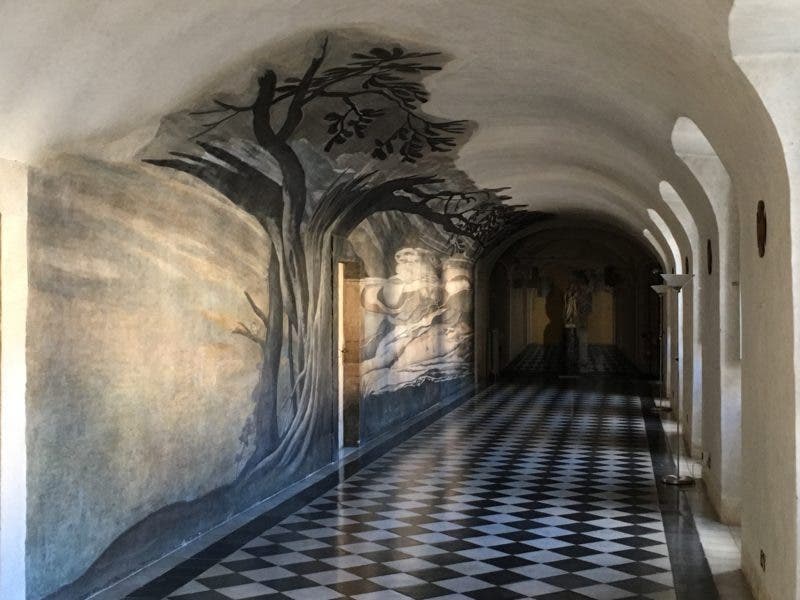Scientist of the Day - Emmanuel Maignan
Emmanuel Maignan, a French mathematician and cleric, was born July 17, 1601. Maignan was a native of Toulouse, in southern France, and before he was twenty, he had joined the Order of Minims, the Catholic order, founded by Francis of Paola in the 15th-century, that included among its brethren the philosopher Marin Mersenne and the perspectivist Jean-François Niceron. Maignan spent 14 years at the order's convent of Santissima Trinità dei Monti in Rome, and while there he wrote an impressive book on sundials, which showed not only how to make your standard garden sundial, but how to project them onto the ceilings of domed churches and the walls of rectories. His study of projections led to an interest in distortions that can be intentionally produced by projecting an image, which is known as anamorphic art, or anamorphosis, and it just so happens that his Minim brother Niceron had published the definitive work on anamorphic art in 1638. We know Maignan was intrigued by anamorphosis, because in 1642, he painted on a wall of the Roman convent an anamorphic image of Saint Francis of Paola. It is still there. Viewed straight on (first image), it is a landscape with tiny buildings and human figures, beneath an immense sky streaked with unrecognizable forms, with an incredibly long tree branch above, and no saint visible anywhere. Here is a detail of part of the painting viewed directly, and you can see what looks like some of the city of Rome. But viewed from the end, down the length of the corridor, the fresco contracts into a view of Francis of Paola praying under a tree (second image).
In 1991, Stephen and Timothy Quay, the Quay Brothers, noted stop-action animators, made a short film, De Artificiali Perspectiva, or Anamorphosis, that explored anamorphosis in 17th-century painting, and three minutes of that film was devoted to Maignan’s painting of Francis of Paola. You can see that segment here, from the beginning to about the 3:12 mark, when it moves on to another painting. There is one especially nice long shot in the film where the camera walks from the middle of the hallway to the end, and the figure of Francis slowly foreshortens and emerges from the wall (as does the tree). There is also a clever animation of a diagram in Niceron’s book that shows how to make an anamorphic painting; in the film it has been altered to construct this particular painting of Francis and his tree. You can see two of the original Niceron diagrams in our post on Niceron, in the second image of the sequence of six. Those of you who have been to Rome have certainly seen Trinità dei Monti from the outside, as it sits at the top of the Spanish Steps, which were not there when Maignan executed his anamorphic painting in the convent corridor. Here is a 17th-century engraving of the Church shortly after construction was completed. We have both Maignan's Perspectiva Horaria (1648) and Niceron's La Perspective curieuse (in the 1663 edition) in our History of Science Collection. I also once wrote a post on a Minim of a later generation, Charles Plumier. Oddly, we have never published a post on Marin Mersenne, the most famous Minim scientist of them all. We will try to rectify that on his birthday, Tuesday, Sep. 8, 2020, if the Library resumes posting on Tuesdays and Thursdays by then. Dr. William B. Ashworth, Jr., Consultant for the History of Science, Linda Hall Library and Associate Professor emeritus, Department of History, University of Missouri-Kansas City. Comments or corrections are welcome; please direct to ashworthw@umkc.edu.







